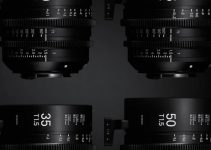Recording high-quality, top-notch production audio on set is one of the most important aspects of the filmmaking process. Whether you capture images in standart definition, HD, 2K or 4K resolution, audio is pretty much a constant.
Some say that your film/video production is 50% audio, so production audio needs to be of a high professional quality, as audiences are more likely to forgive not so great images, but bad audio is something they’ll notice and dismiss right away.
Usually, it’s even more important than video itself. As a person with a sound engineering background, recording top quality audio has always been a substantial priority for me.
In order to capture a high quality audio for your projects, as rule of thumb, you should always record sound at the max sample rate and bit depth that your field recorder gives you.
Nevertheless, 24-bit, 48000 kHz stereo or 5.1 is the DCI standard for a common digital cinema projection. Besides, even an some smartphones feature those settings nowadays, so no more excuses, please!
Balanced mic inputs with phantom power is a must feature you should bear in mind as well. Fortunately, many of the professional field recorders such as the Zoom H4n, Tascam DR-100 mark II, Olympus LS-100, Marantz PMD620 MKII etc have two of those at least.
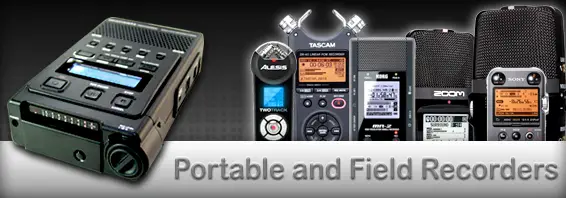
In this post, we are going to cover three robust and affordable boom mics available on the market currently. The first one on our list is the RODE NTG-3.
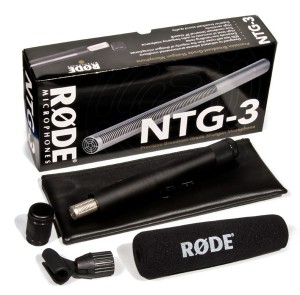 The frequency response of the NTG-3 shotgun microphone is nice and flat. All microphones are more or less sensitive to certain frequencies, so what you’re looking for is a nice flat line between 80 and 1,200Hz, which is the frequency of the human voice range.
The frequency response of the NTG-3 shotgun microphone is nice and flat. All microphones are more or less sensitive to certain frequencies, so what you’re looking for is a nice flat line between 80 and 1,200Hz, which is the frequency of the human voice range.
The NTG-3‘s design provides a slightly broader pickup pattern than that of most shotgun mics, making the microphone angle less critical and more forgiving for boom operators.
The signal-to-noise ratio is another important factor for you to consider when you are purchasing a microphone.
Just by existing, every microphone makes some noise, even when it’s recording nothing but silence – similar to the sound your speakers make when there’s nothing playing through your stereo system.
The goal of all microphone manufacturers is to minimize the amount of this noise, and the RODE NTG-3 comes in at 81db, which is very quiet indeed. As a general rule the recommended Signal-to-noise (S/N) ratio of those microphones should be in the 60-80db range.
The NTG-3‘s retail price at the moment is $699 on B&H in the US.
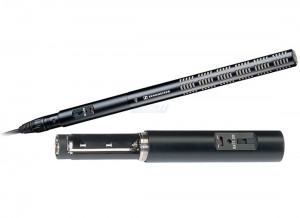 The second boom mic we are going to look at is the Sennheiser ME 66. It is still very good mic for its price, however one of the downsides I found was the lack of good response in the low frequency range. You’ll definitely need to do some EQ adjustments in post-production especially in this part of the spectrum, so keep that in mind.
The second boom mic we are going to look at is the Sennheiser ME 66. It is still very good mic for its price, however one of the downsides I found was the lack of good response in the low frequency range. You’ll definitely need to do some EQ adjustments in post-production especially in this part of the spectrum, so keep that in mind.
This mic’s capsule takes advantage of the K6 modular power supply which is a nice feature. The K6 houses a standard AA alkaline battery and is also capable of accepting phantom power from outside sources.
For someone starting out in the field of audio production, the Sennheiser ME 66 is probably one of the best, especially for the price of $519,95.
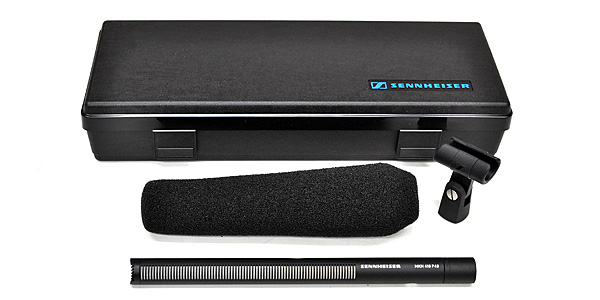
And, the last, but not at least, the third option we suggest is the Sennheiser MKH 416. It’s a robust shotgun mic, it’s my personal choice and I definitely can say it is worth every penny I spent on it.
The Sennheiser MKH 416 is a great boom mic, and has been a vital part of the film industry for more that 50 years. It has been used on countless Hollywood films, and probably some of your favorite feature films. It’s a high quality boom mic that makes every voice sounds rich, detailed, deep and punchy. Sure, it will cost you $999.95, but it’s an investment that will recoup and will serve you well for many years.
In the video below you’ll hear clearly the main differences between the Sennheisers’ models we went over in this post:
[YouTube link – Roland Comfort]
What is your personal choice when it comes to choosing a boom mic for your productions? We’d to hear your opinions in the comments below.
Disclaimer: As an Amazon Associate partner and participant in B&H and Adorama Affiliate programmes, we earn a small comission from each purchase made through the affiliate links listed above at no additional cost to you.
Claim your copy of DAVINCI RESOLVE - SIMPLIFIED COURSE with 50% off! Get Instant Access!



